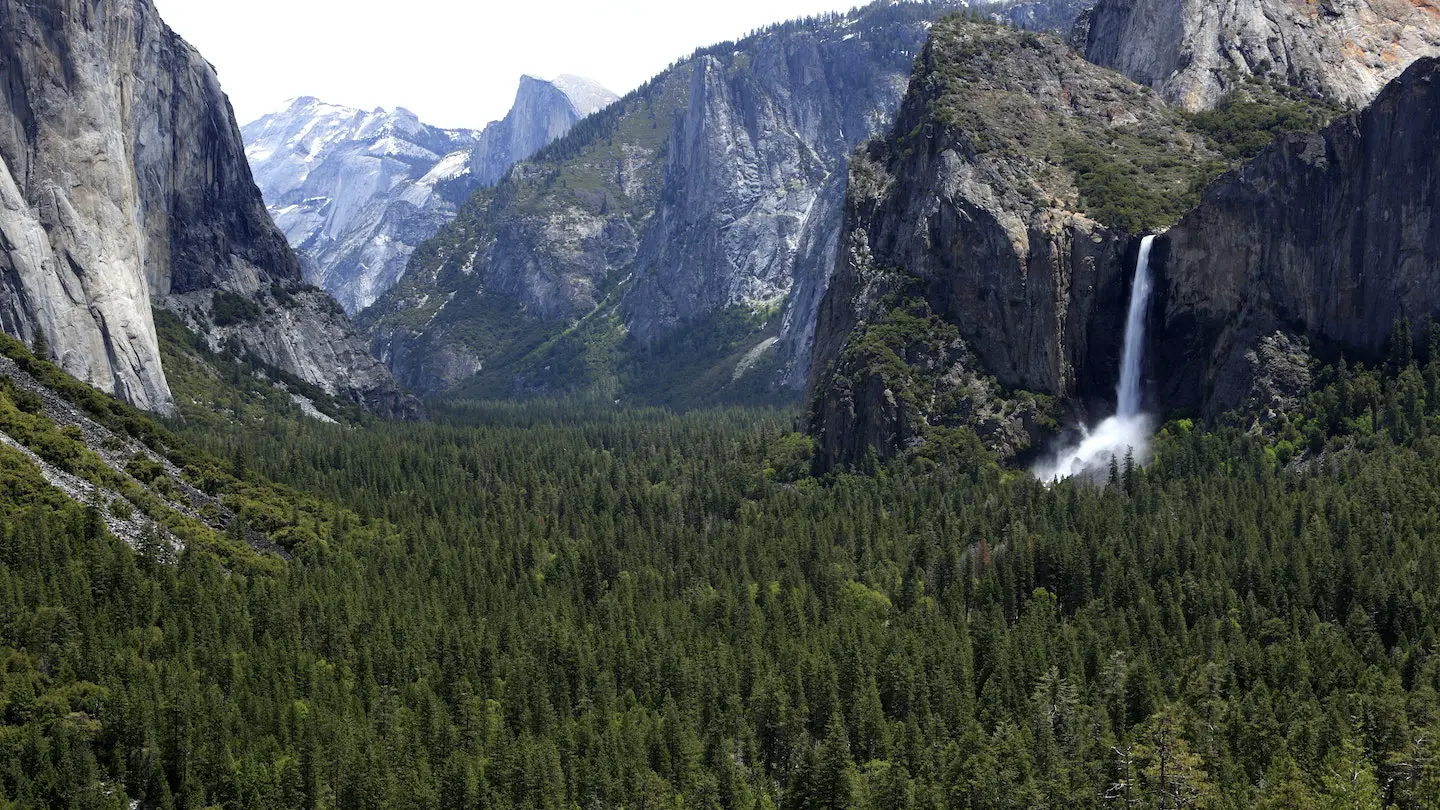Have you ever wondered what it would be like to stand in awe of a magnificent waterfall? To feel the mist on your face, hear the rush of the water, and witness the sheer power and beauty of nature? Well, let me tell you, Yosemite National Park is the place to go if you want to experience all that and more. In this article, I’ll take you on a journey through the stunning waterfalls of Yosemite National Park, where you’ll discover some of the most breathtaking sights nature has to offer.
Yosemite National Park is home to some of the most picturesque landscapes in the United States. From towering granite cliffs to serene meadows and ancient giant sequoias, this place is a paradise for nature lovers. And when it comes to waterfalls, Yosemite does not disappoint. With over 200 breathtaking waterfalls scattered throughout the park, there’s no shortage of stunning sights to discover. From the mighty Yosemite Falls, which stands at a staggering 2,425 feet and is one of the tallest waterfalls in North America, to the elegant Vernal Falls, where you can witness the sheer power of the Merced River as it crashes down into a misty canyon, each waterfall in Yosemite has its own unique charm. So, if you’re ready to be awe-inspired and connect with nature in a truly profound way, keep reading because we’ve got a lot more to uncover in this article.
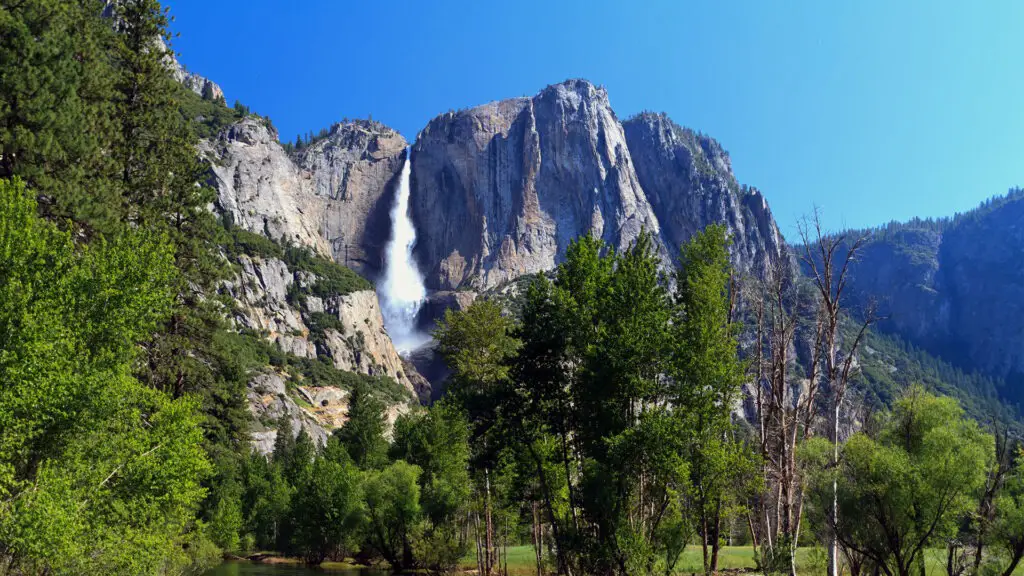
Discovering the Majestic Waterfalls of Yosemite National Park
Yosemite National Park, located in the western part of the Sierra Nevada mountains in California, is a nature lover’s paradise. The park is renowned for its awe-inspiring waterfalls, towering granite cliffs, and pristine wilderness. As an avid hiker and outdoors enthusiast, I recently had the incredible opportunity to explore the stunning waterfalls that grace this remarkable landscape. In this article, I will take you on a journey through Yosemite National Park, showcasing the beauty and grandeur of its most iconic waterfalls.
Location and Overview
Yosemite National Park covers an area of over 747,000 acres, offering a diverse range of ecosystems and natural wonders. It is situated about 200 miles east of San Francisco and 300 miles north of Los Angeles, making it easily accessible for visitors from both coasts. The park is home to towering sequoia trees, alpine meadows, and the famous Yosemite Valley, which is characterized by its sheer granite cliffs and picturesque meadows. With over 3.5 million visitors annually, Yosemite National Park is a beloved destination for outdoor enthusiasts, nature lovers, and photographers alike.
History of the Park
Yosemite National Park has a rich history that dates back thousands of years. The Ahwahneechee people, who were indigenous to this region, were the first inhabitants of Yosemite Valley. Their way of life was deeply intertwined with the natural landscape, and they considered the valley to be a sacred place. In the mid-19th century, European settlers began to explore the area, and in 1864, President Abraham Lincoln signed the Yosemite Grant, protecting the land as a state park. Later, in 1890, Yosemite became a national park, becoming one of the first protected natural areas in the United States. Today, the park continues to honor its Native American heritage and strives to preserve its natural and cultural resources for future generations to enjoy.
Geological Features
Yosemite National Park is renowned for its breathtaking geological features, which have been shaped over millions of years. The park is situated in the Sierra Nevada mountain range, which was formed through tectonic activity and glacial erosion. Yosemite Valley, the centerpiece of the park, was carved out by glaciers during the last Ice Age. The valley is characterized by towering granite cliffs, such as El Capitan and Half Dome, and glacially-formed features, including U-shaped valleys and hanging valleys. Waterfalls, such as Yosemite Falls and Bridalveil Fall, cascade down these magnificent cliffs, adding to the park’s natural splendor.
Waterfalls in Yosemite
Types of Waterfalls
Yosemite National Park is home to a variety of waterfalls, each with its own unique characteristics. The park boasts both ephemeral and perennial waterfalls, with the latter flowing year-round. Ephemeral waterfalls, on the other hand, depend on seasonal rainfall and snowmelt for their flow. Yosemite’s waterfalls can be further categorized into two types based on their formation: hanging waterfalls and plunge waterfalls. Hanging waterfalls, such as Yosemite Falls and Bridalveil Fall, descend over vertical cliffs, while plunge waterfalls, like Vernal Fall and Nevada Fall, cascade down inclined slopes.
Famous Waterfalls in the Park
Yosemite National Park is renowned for its iconic waterfalls, which have captivated visitors for centuries. One of the most famous waterfalls in the park is Yosemite Falls, which holds the distinction of being the tallest waterfall in North America. With a total height of 2,425 feet, Yosemite Falls is a breathtaking sight to behold. Another well-known waterfall is Bridalveil Fall, which plunges 620 feet into Yosemite Valley. Its delicate mist creates an ethereal atmosphere, especially when illuminated by the golden rays of the setting sun. Vernal Fall and Nevada Fall are also prominent attractions in the park, captivating visitors with their powerful cascades and scenic beauty.
Scenic Beauty of Waterfalls
The waterfalls in Yosemite National Park are not only impressive in their sheer size and power but also imbued with a striking natural beauty. As I hiked along the trails that lead to these majestic waterfalls, I couldn’t help but marvel at the scenery that surrounded me. Lush green meadows, vibrant wildflowers, and towering granite cliffs provided a picturesque backdrop to the cascading water. The roar of the falling water and the mist that filled the air added to the sensory experience, creating a sense of awe and wonder. Standing in the presence of these majestic waterfalls, I felt a deep connection to the power and beauty of nature.
Exploring Yosemite’s Waterfalls
Popular Hiking Trails
Yosemite National Park offers a wide range of hiking trails that lead to its stunning waterfalls. For those seeking an awe-inspiring adventure, I highly recommend hiking the Mist Trail, which takes you to both Vernal Fall and Nevada Fall. This trail offers breathtaking views of the cascades and allows you to feel the mist on your face as you ascend the granite steps. Another popular trail is the Yosemite Falls Trail, which leads to the top of Yosemite Falls. This strenuous hike rewards you with panoramic views of Yosemite Valley and the surrounding wilderness. The Bridalveil Fall Trail is a more accessible option, suitable for all skill levels, and offers a closer look at the iconic waterfall.
Best Times to Visit
The best time to visit Yosemite National Park to witness its waterfalls in all their glory is during the spring and early summer months. This is when the snowmelt from the Sierra Nevada mountains feeds the waterfalls, causing them to flow at their highest volume. The Mist Trail, in particular, is most impressive during this time, as the cascades thunder down with immense power. However, it’s important to note that the popularity of the park during this season can make it crowded, so it’s advisable to plan your visit accordingly. Additionally, some of the lower-elevation waterfalls, such as Bridalveil Fall, flow year-round and can be enjoyed at any time of the year.
Guided Tours
For those who prefer a guided experience, Yosemite National Park offers a variety of tours that showcase its spectacular waterfalls. From ranger-led hikes to photography workshops, these tours provide valuable insights into the park’s natural and cultural history. Additionally, guided tours can help navigate the logistics of visiting popular waterfalls, such as parking and trailhead access. Whether you’re a first-time visitor or a seasoned Yosemite explorer, participating in a guided tour can enhance your overall experience and ensure you make the most of your time in the park.
Yosemite Falls
Tallest Waterfall in North America
Yosemite Falls, located within Yosemite Valley, is undoubtedly one of the most awe-inspiring natural wonders in the park. With a total height of 2,425 feet, it is the tallest waterfall in North America, captivating visitors with its sheer size and power. As I gazed up at the towering cliffs from the base of the falls, I couldn’t help but feel a sense of reverence for the forces of nature. The cascades are divided into three sections: the Upper Fall, which drops 1,430 feet; the Middle Cascades, which descend 675 feet; and the Lower Fall, which plunges an additional 320 feet. Standing at the base of Yosemite Falls, I was immersed in the raw beauty and grandeur of this natural wonder.
Yosemite Valley’s Icon
Yosemite Falls is not only a natural wonder but also an iconic symbol of Yosemite Valley. Its cascades can be seen from various viewpoints within the valley, adding to the park’s scenic beauty. As I explored the valley, I couldn’t help but be drawn to the presence of Yosemite Falls, its roar echoing throughout the surrounding cliffs and meadows. The falls become particularly enchanting during the springtime when the surrounding landscape is alive with vibrant wildflowers and lush greenery. This iconic waterfall serves as a reminder of the power and majesty of nature, leaving a lasting impression on all who witness its splendor.
Hiking to the Falls
Hiking to Yosemite Falls is a must-do experience for any visitor to Yosemite National Park. The Yosemite Falls Trail, which starts near Yosemite Valley Lodge, takes you on a challenging but rewarding journey to the top of the falls. As I ascended the trail, I was treated to breathtaking views of Yosemite Valley and the surrounding wilderness. Along the way, I stopped at various viewpoints to marvel at the cascades from different angles. The final stretch to the top of the falls was steep and strenuous, but the sense of accomplishment and the panoramic views made it all worthwhile. Hiking to the top of Yosemite Falls allowed me to truly appreciate the magnitude and beauty of this extraordinary natural wonder.
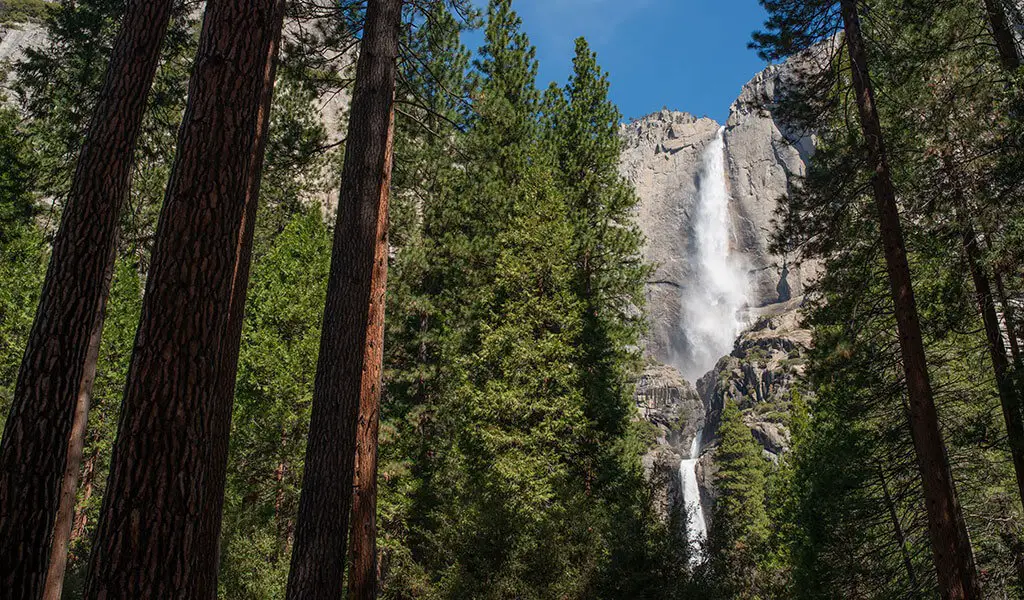
Bridalveil Fall
Iconic Waterfall with Misty Spray
Bridalveil Fall is one of the most iconic waterfalls in Yosemite National Park, renowned for its delicate beauty and ethereal mist. The falls descend 620 feet from above an imposing granite cliff, creating a mesmerizing spectacle. As I approached Bridalveil Fall, I could feel the mist on my face, and a sense of tranquility washed over me. The spray from the cascading water gives the falls their ethereal quality, often creating the illusion of a bridal veil, hence the name. The delicate nature of Bridalveil Fall, combined with its stunning surroundings, makes it a must-visit destination for anyone exploring Yosemite National Park.
Access and Viewpoints
Accessing Bridalveil Fall is relatively easy, as there is a paved trail that leads directly to its base. The trailhead is located near Bridalveil Fall parking area, and the walk to the falls takes only a few minutes. As I followed the trail, I was surrounded by the peaceful sounds of nature, providing a sense of serenity. Along the way, there are several viewpoints that allow you to marvel at the cascades from different angles. These viewpoints offer a closer look at the falls and provide ample photo opportunities. I found myself mesmerized by the sheer beauty and graceful elegance of Bridalveil Fall from every vantage point.
Wildflowers around the Fall
Visiting Bridalveil Fall during the spring and early summer months is a truly enchanting experience. The surrounding meadows burst into a riot of vibrant wildflowers, creating a kaleidoscope of colors. As I hiked to the falls, I was greeted by a multitude of blooming flowers, including lupines, poppies, and Indian paintbrush. The delicate petals swayed gently in the breeze, as if dancing to the rhythm of the cascading water. This explosion of floral beauty added an extra layer of magic to the already captivating scene. Exploring the area around Bridalveil Fall allowed me to fully immerse myself in the splendor of nature’s artistry.
Vernal Fall
Picturesque Cascade with Rainbows
Vernal Fall is a picturesque waterfall that showcases the raw power and beauty of nature. With a drop of 317 feet, it offers a mesmerizing display of cascading water, often accompanied by rainbow formations. As I hiked up the Mist Trail, I could hear the thundering sound of Vernal Fall before I could even catch a glimpse of its splendor. As I reached the viewpoint, I was greeted by a breathtaking sight – the cascades descending in a graceful curtain, creating a delicate mist that shimmered with rainbows. The experience was nothing short of awe-inspiring, and I couldn’t help but feel a profound connection to the natural world.
Mist Trail Hike
The Mist Trail is the most popular and iconic trail in Yosemite National Park, and for good reason. This trail takes you on a thrilling adventure to both Vernal Fall and Nevada Fall, offering close-up views of their cascades. The trail gets its name from the mist created by the waterfalls, which can engulf hikers, providing a refreshing and immersive experience. As I ascended the granite steps of the Mist Trail, I could feel the mist on my skin and hear the roar of the cascades growing louder with each step. The hike was challenging but immensely rewarding, as it allowed me to witness the power and beauty of Vernal Fall up close.
John Muir Trail Connection
For those seeking an extended hiking adventure, the Mist Trail connects with the John Muir Trail at the top of Vernal Fall. The John Muir Trail is named after the renowned naturalist and preservationist who played a crucial role in the establishment of Yosemite National Park. The trail stretches for 211 miles through the Sierra Nevada mountains and offers breathtaking views and unparalleled wilderness experiences. Connecting with the John Muir Trail provides the opportunity to continue your journey through Yosemite’s pristine backcountry, immersing yourself in its natural splendor and discovering hidden gems along the way.
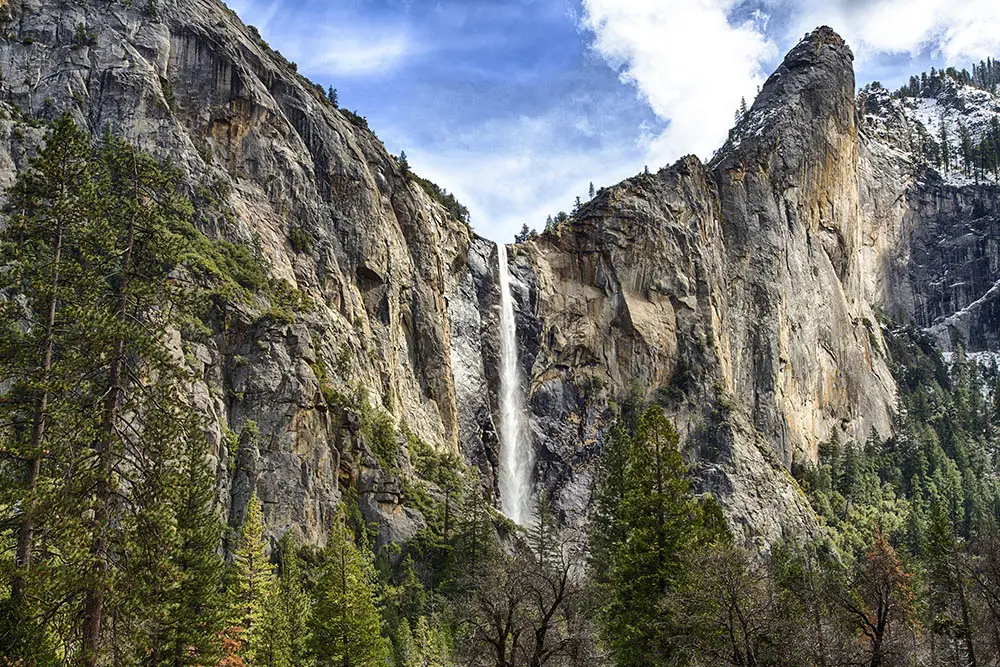
Nevada Fall
Elegant Waterfall with Granite Slabs
Nevada Fall is another elegant waterfall in Yosemite National Park that showcases the dramatic beauty of the park’s landscape. With a drop of 594 feet, it is slightly taller than Vernal Fall and offers a striking cascade of water that glistens as it tumbles down granite slabs. As I reached the top of Nevada Fall after hiking the Mist Trail, I was rewarded with an awe-inspiring panorama. The granite slabs created a stunning backdrop for the cascades, providing a sense of serenity and grandeur. Standing at the top of Nevada Fall, I felt a profound sense of gratitude for being able to witness such natural beauty.
Panorama Trail Hike
For those looking to experience the immense beauty of Yosemite National Park in its entirety, the Panorama Trail offers a breathtaking journey from Glacier Point to the floor of Yosemite Valley, passing by Nevada Fall along the way. This 8.5-mile trail showcases the park’s iconic landmarks, including Half Dome, Illilouette Fall, and of course, Nevada Fall. Hiking the Panorama Trail allows you to witness the park’s majestic waterfalls, towering cliffs, and expansive vistas. It is a challenging but rewarding hike that offers a truly immersive experience in the splendor of Yosemite National Park.
Panoramic Views from Clark Point
Clark Point, located near the top of Nevada Fall, offers panoramic views of the surrounding landscape, including Yosemite Valley and the cascades below. This viewpoint provides a unique perspective on the grandeur of the park, allowing you to appreciate the scale of the cliffs and the vastness of the wilderness. The granite cliffs that tower above the valley create a sense of awe, reminding us of the immense power of nature. Standing at Clark Point, I was in awe of the panoramic views that stretched out before me, and I couldn’t help but feel a deep appreciation for the natural wonders of Yosemite National Park.
Horsetail Fall
Seasonal Firefall Phenomenon
Horsetail Fall is a unique waterfall in Yosemite National Park that undergoes a spectacular transformation during a few weeks in February. Known as the “Firefall,” this natural phenomenon occurs when the setting sun illuminates the cascades with vibrant hues of orange and red, making it look like a flowing stream of fire. As I waited in anticipation at the designated viewpoint, camera in hand, I couldn’t contain my excitement. When the moment finally arrived, I was spellbound by the sheer beauty of the Firefall. The water took on an ethereal glow, contrasting against the dark granite cliffs. Witnessing this rare event was a once-in-a-lifetime experience that left me in awe of nature’s incredible artistry.
Natural Beauty
Beyond its famous Firefall event, Horsetail Fall is a stunning waterfall in its own right. Dropping 1,000 feet down El Capitan, it creates a breathtaking spectacle throughout the year. Its delicate cascades and the mist that fills the air add to its natural beauty. Even without the vibrant colors of the Firefall, Horsetail Fall is a testament to the raw power and beauty of Yosemite National Park. As I marveled at the falls, I couldn’t help but feel a sense of wonder and gratitude for being able to witness such natural wonders.
Photography Tips
Photographing the Firefall requires careful planning and preparation. The optimal time to capture this magical event is during late February, when the setting sun aligns perfectly with the waterfall. As I set up my camera, I made sure to bring a sturdy tripod to ensure stability during long exposures. I also used a telephoto lens to zoom in on the falls and capture the details of the flowing water. Additionally, a polarizing filter helped to enhance the colors and reduce glare. Patience and persistence were key, as the conditions had to be just right for the Firefall to occur. With careful planning and a bit of luck, I was able to capture the vibrant colors and ethereal beauty of the Firefall, creating lasting memories of this extraordinary natural phenomenon.
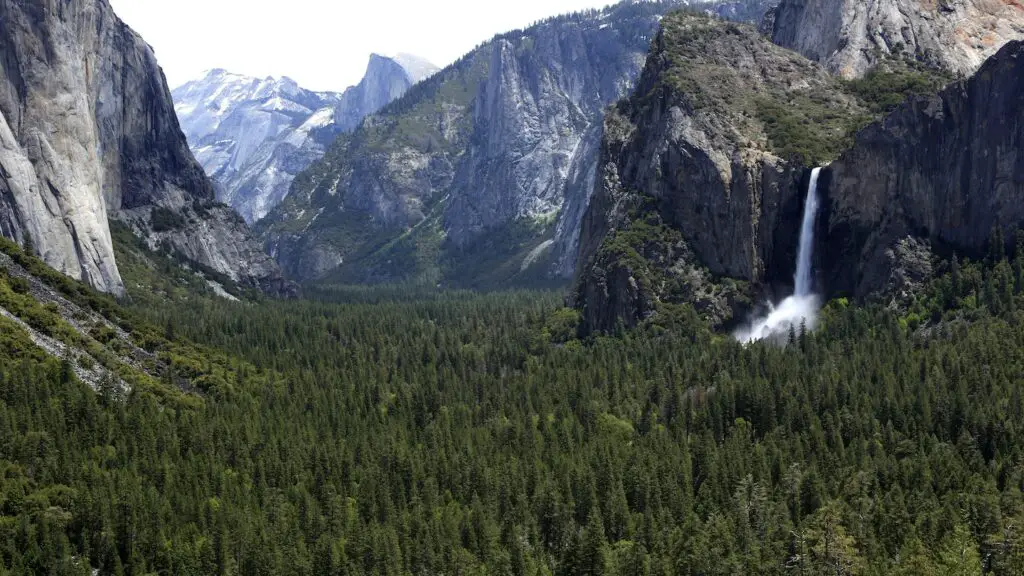
Lower Yosemite Fall
Accessible and Family-Friendly
Lower Yosemite Fall is the most accessible waterfall in Yosemite National Park, making it ideal for visitors of all ages and abilities. The trailhead is located near Yosemite Valley Lodge, and a short walk brings you to the base of the falls. The smooth, paved trail is wheelchair and stroller-friendly, allowing everyone to experience the beauty and power of this iconic waterfall. As I walked along the trail, I was struck by the diversity of visitors, from families with young children to elderly individuals enjoying a leisurely stroll. Lower Yosemite Fall provides an inclusive and welcoming experience for all who visit this natural wonder.
Nature Center and Exhibits
Near the trailhead of Lower Yosemite Fall is the Yosemite Valley Visitor Center, which houses a Nature Center and exhibits that provide valuable information about the park’s natural and cultural history. The Nature Center features interactive displays, educational programs, and knowledgeable park rangers who are eager to answer questions. Exploring the exhibits allowed me to deepen my understanding of Yosemite National Park and its waterfalls, adding a layer of context to my experience. The learning opportunities provided by the Nature Center make Lower Yosemite Fall a perfect destination for those seeking both natural beauty and educational enrichment.
Loop Trail
For those looking to extend their visit to Lower Yosemite Fall, a loop trail offers the opportunity to explore more of the surrounding meadows and forests. This trail takes you on a leisurely journey through the peaceful wilderness, providing different perspectives of the waterfall. As I hiked the loop trail, I was surrounded by the serene sounds of nature – birds chirping, leaves rustling, and the distant roar of the falls. The peacefulness of the trail, combined with the beauty of the waterfall, created a sense of tranquility and serenity. The loop trail at Lower Yosemite Fall is a wonderful way to immerse yourself in the park’s natural splendor and take in the sights and sounds of Yosemite National Park.
Waterfalls in Yosemite’s Wilderness
Lesser-Known Falls
While Yosemite National Park is famous for its iconic waterfalls, it is also home to several lesser-known falls that are equally deserving of admiration. For those seeking off-the-beaten-path adventures, exploring these hidden gems in the park’s wilderness can be a rewarding experience. Some of these lesser-known falls include Rancheria Falls, Chilnualna Falls, and Wapama Falls. These waterfalls offer solitude and tranquility, allowing visitors to connect with nature on a deeper level. While they may not have the same scale or fame as the park’s more popular waterfalls, these hidden treasures showcase the diversity and splendor of Yosemite National Park.
Off-Trail Explorations
For the more adventurous souls, off-trail explorations in Yosemite National Park can lead to the discovery of hidden waterfalls and secluded natural wonders. While venturing off the marked trails requires careful planning, appropriate gear, and a good sense of direction, it can lead to unique and breathtaking experiences. As I ventured off the beaten path, guided by a seasoned wilderness expert, I marveled at the untouched beauty of the backcountry. The reward of stumbling upon a hidden waterfall, far away from the crowds, was immeasurable. Off-trail explorations allowed me to connect with the wilderness on a deeper level and experience Yosemite National Park in a truly intimate and personal way.
Backcountry Permits
Exploring the waterfalls in Yosemite National Park’s wilderness often requires obtaining backcountry permits. These permits allow you to spend extended periods in the park’s remote areas and experience its natural wonders away from the crowds. Obtaining a backcountry permit involves planning your itinerary in advance, making reservations, and adhering to park regulations. While the process may seem daunting, it is well worth the effort for those seeking a truly immersive and adventurous experience. Backcountry permits offer the opportunity to discover hidden waterfalls, witness the park’s wildlife, and connect with nature in a way that few others have the privilege to experience.
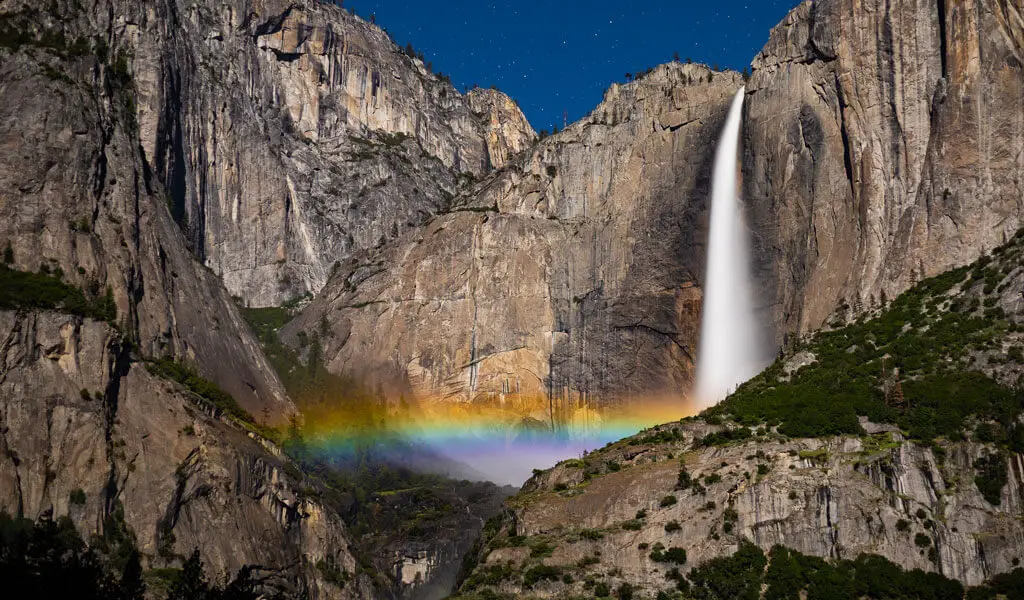
Photographing Yosemite’s Waterfalls
Composition and Lighting
Photographing Yosemite’s waterfalls requires careful attention to composition and lighting. The park’s waterfalls are enormous and can be challenging to capture in a single frame. When composing your shot, consider including surrounding elements, such as granite cliffs or lush meadows, to provide context and scale. Experimenting with different angles and perspectives can also add interest to your photographs. Additionally, lighting plays a crucial role in capturing the beauty of the waterfalls. Shooting during the soft golden light of sunrise or sunset can create a warm and ethereal atmosphere, enhancing the overall impact of your photographs. Patience and creativity are key when photographing Yosemite’s waterfalls, allowing you to capture their true essence and convey their mesmerizing beauty.
Recommended Gear
To capture the beauty of Yosemite’s waterfalls, it is essential to have the right gear. A sturdy tripod is essential to ensure sharp images, especially when using longer shutter speeds. A wide-angle lens is ideal for capturing the grandeur of the waterfalls and including surrounding landscapes in your frame. Additionally, a telephoto lens can be useful for zooming in on details or capturing the cascades from a distance. Circular polarizing filters are also recommended to reduce reflections, enhance colors, and emphasize the textures of the surrounding rocks and vegetation. And, of course, don’t forget extra memory cards and batteries, as photographing Yosemite’s waterfalls can be a truly captivating experience that may leave you wanting to capture every breathtaking moment.
Capturing Unique Perspectives
To truly capture the essence of Yosemite’s waterfalls, it’s important to seek out unique perspectives and moments. As I explored the park, I made an effort to veer off the beaten path and find lesser-known viewpoints. These vantage points allowed me to capture the waterfalls from different angles and showcase their unique features. I also made it a point to visit the waterfalls during different times of the day, capturing the changing light and mood. Furthermore, incorporating the elements of nature, such as flowers, rocks, or fallen leaves, can add depth and context to your photographs. Capturing unique perspectives requires a sense of adventure and a willingness to explore, ultimately resulting in photographs that tell a story and evoke emotion.
Protecting and Preserving Waterfalls
Conservation Efforts
Yosemite National Park is committed to protecting and preserving its waterfalls and natural resources for future generations. Conservation efforts include maintaining trails and infrastructure, managing the park’s water resources, and promoting environmentally-friendly practices. These efforts ensure that the waterfalls in Yosemite National Park continue to flow in all their pristine beauty, providing awe-inspiring experiences for visitors from around the world. As I hiked along the trails and witnessed the grandeur of the waterfalls, I couldn’t help but be grateful for the dedication and commitment of those who work tirelessly to protect and preserve this remarkable natural treasure.
Leave No Trace Principles
As visitors to Yosemite National Park, it is our responsibility to minimize our impact and practice Leave No Trace principles. These principles include packing out all trash, respecting wildlife and their habitats, staying on designated trails, and leaving natural and cultural resources undisturbed. By following these principles, we can ensure that the waterfalls and the surrounding wilderness remain unspoiled for future generations. During my visit, I made a conscious effort to adhere to these principles, practicing mindfulness and respect for the natural world. By doing so, I felt a sense of stewardship and contribution to the preservation of Yosemite’s waterfalls and the park as a whole.
Educational Programs
Yosemite National Park offers a variety of educational programs that allow visitors to learn about the park’s waterfalls and their ecological significance. From ranger-led talks to environmental workshops, these programs provide valuable insights into the importance of water conservation, the role of waterfalls in the park’s ecosystem, and the need to preserve these natural wonders. Participating in these educational programs deepened my appreciation for the waterfalls and helped me understand their cultural and ecological significance. By sharing knowledge and raising awareness, Yosemite National Park is fostering a deeper connection between visitors and the natural wonders that make the park so special.
Conclusion
Exploring the majestic waterfalls of Yosemite National Park was a truly transformative experience. As I hiked along the trails, stood in awe of the cascading water, and captured the beauty through my camera lens, I couldn’t help but feel a deep connection to the power and splendor of nature. The waterfalls in Yosemite National Park are not merely geological formations; they are reminders of our place in the world and the importance of preserving our natural heritage. Whether you are an avid hiker, a photography enthusiast, or simply seeking solace in nature’s embrace, a visit to Yosemite’s waterfalls is sure to leave an indelible mark on your heart and soul. So go, discover the majesty of Yosemite National Park’s waterfalls, immerse yourself in its natural splendor, and glimpse the true power and beauty of the natural world.
